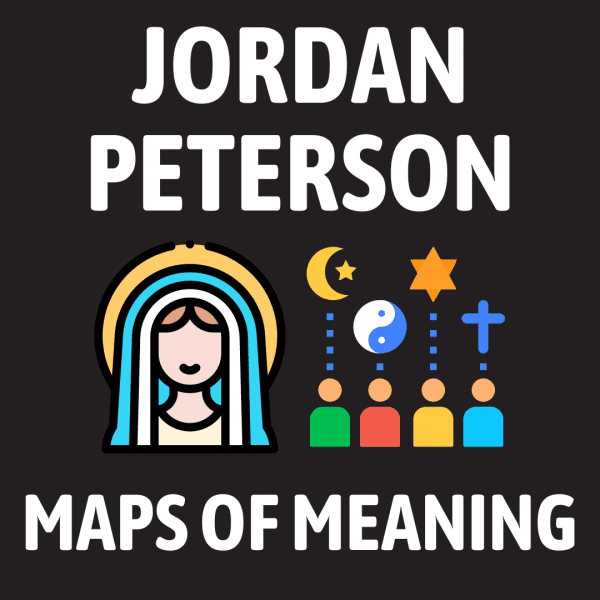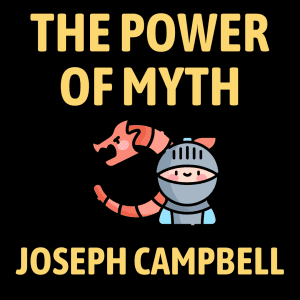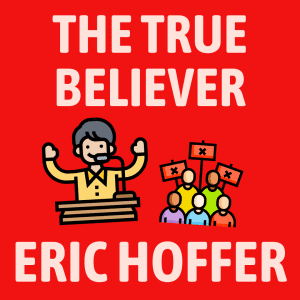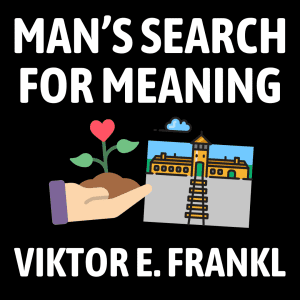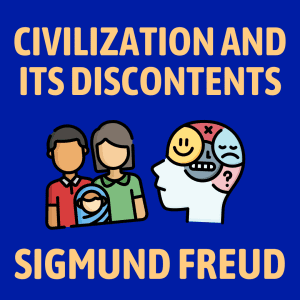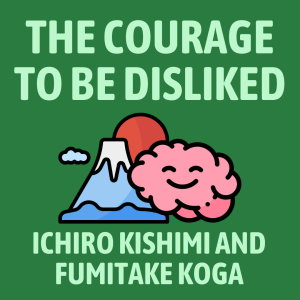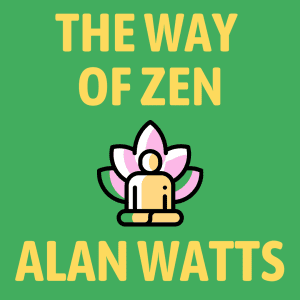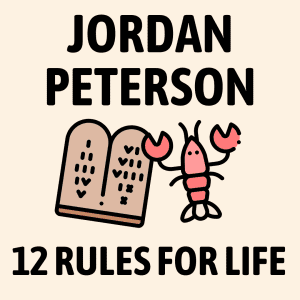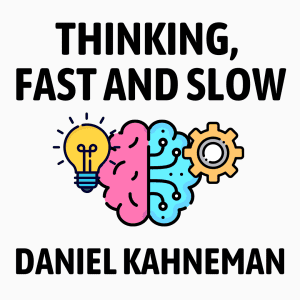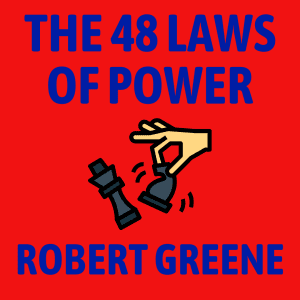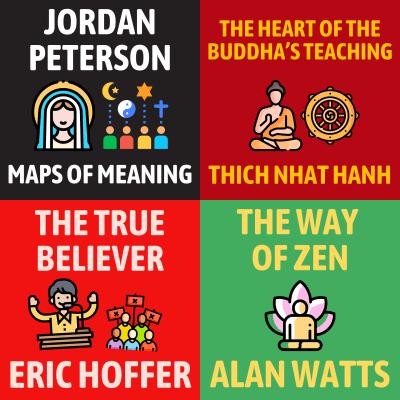Maps of Meaning was a long and dense book for me to read. It’s basically written like a university textbook. But it was totally worth it because this book confronts some of the most meaningful questions any of us could ask like:
- how to find life meaning,
- how to rediscover value in religion as a secular person, and
- how to survive life’s catastrophes
And good news!—On this page, I’ve summarized the top lessons from this book in plain english so you can integrate this wisdom into your life more quickly and easily.
📚 1. Jordan Peterson’s Story: Why study myths? Because they reveal deep insights into human nature and society
Jordan Peterson is a clinical psychologist and professor who taught at Harvard and the University of Toronto. He became famous for his public political stances and confrontational debates against people on the political far-left. While Dr. Peterson dislikes being called a right winger and describes himself as a classical British liberal, many of his viewpoints echo modern conservatism and praise the value of tradition.
Jordan Peterson left religion in his teenage years like many in the Western world. When many of his reasonable questions about religion could not be answered by adults, he finally had to leave it behind, regarding it as outdated superstition.
Then, in a move Dr. Peterson would later see as unbelievably stereotypical and predictable, he turned to political utopia for the answers that religion could no longer provide. He became involved with organizing the local left-wing political party, which mostly was composed of socialists who claimed a new economic system would fix the problems of working class people. But after some time in this organization, he was deeply troubled that he couldn’t respect any of the activists he met. They loved to talk about virtues compassion, but underneath the surface they were undisciplined and bitter people who contained nothing meaningful in their lives but their left-wing ideology.
At the same time, Jordan Peterson was also volunteering at a college board where he met many successful business owners. And while their conservative views greatly conflicted with his, he respected them tremendously. They were disciplined, intelligent, trustworthy and dedicated to their families. This was very confusing for him.
Later in life, Dr. Peterson was reading a book by George Orwell that gave him insight into this conflict and why he couldn’t like the socialist activists. Orwell wrote that socialists in his time were motivated not by love for the poor, but just hatred for the rich, despite what they claimed. And these people used a “compassionate” ideology as a mask for their real motives, which was resentment born of personal failure and a desire for revenge. Their ideology played an important emotional role in their lives, allowing them to remain blind as to their own role in causing their life frustrations.
But in the end Dr. Peterson found the fundamental thing that disturbed him about those people was their possession by ideology itself, not that they were left wing or right wing.
An ideology is a system of belief that usually gives people simple rules of dividing the world into good people and bad people, oppressors and victims. Of course, the people selling us the ideology always assure us that WE are undeniably on the good side, and some other group of THEMS are on the evil side. This allows people to avoid painful self-reflection, it allows us to avoid taking responsibility for any evil in the world. We’ll come back to this idea in a minute, but let’s return for now to Dr. Peterson’s life…
Confronting the Existence of Evil
The Cold War was at its height and total nuclear annihilation of human civilization was felt to be really possible. This was happening at the time Jordan Peterson was training to be a clinical psychologist and doing research for this book. He was deeply disturbed by what was happening in the world and wanted to know how people could have allowed this to happen? Nobody wanted to die, yet everybody’s survival was uncertain.
To answer these questions, Dr. Peterson knew he had to dig deeply into human psychology. And his first instinct was to study why “those other guys” were evil. Like most of us, Dr. Peterson thought of himself as a good and moral person. He didn’t think it was possible for the source of evil to be coming from inside himself. Evil must be found out there, in the Hitlers, Stalins and Mussolinis of the world.
For a while he was working in a prison training as a psychologist. And the first thing he noticed while speaking with the prisoners was how… unusually normal… they seemed. Even the prisoners who had done some of the worst crimes wouldn’t look out of place at a family barbecue.
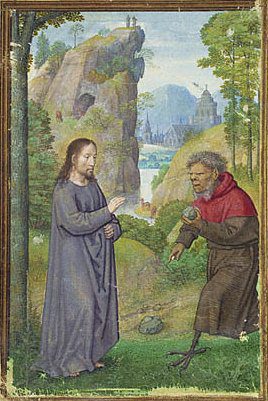
Eventually Dr. Peterson realized that if he wanted to truly understand evil, then he would have to find it within himself first. So for example, in the prison a couple prisoners pulverized another man’s leg with a metal pipe because they suspected him to be an informer. Dr. Peterson was upset by the brutality these people were capable of, but then he thought long and hard about what it would take for HIM to do this kind of violent act. He imagined seriously what kinds of circumstances and thought processes he would have to go through.
And he was alarmed to discover that he was in fact very capable of violence and evil. He hadn’t done it, perhaps because of life circumstances, but he was every bit as capable as the prisoners. Considering the guards in World War 2 German concentration camps had probably been ordinary plumbers, carpenters and office workers before the war, this makes sense.
This insight was reinforced by many of the religious and cultural myths that Dr. Peterson was studying at the same time.
Myths take the reality of evil very seriously
Myths take the reality of evil very seriously. For example, think about the mythical character of the Devil, which is perhaps the most powerful mythical idea of the past several hundred years. This idea that there is a destructive force whispering in every human’s ear, urging us towards thoughtless and malicious acts, this idea truly embodies the personal capacity for evil that each one of us carries with us.
The Gulag Archipelago is a book often mentioned by Jordan Peterson. It was written by Alexander Solzhenitsyn, a Russian author who criticized Stalin in a private letter to his friend, and because of that was sent to the forced labour camps of the Soviet Union for several years. At first Solzhenitsyn blamed Stalin and his followers for his unjust imprisonment and the other evils committed by the Soviet state, including deaths of millions of people. But in this book he eventually comes to understand how his individual moral deficiencies (added and compounded to each other person’s deficiencies) caused the evil and corrupt Soviet Union state. Solzhenitsyn famously wrote:
“Gradually it was disclosed to me that the line separating good and evil passes not through states, nor between classes, nor between political parties either – but right through every human heart – and through all human hearts.” – Solzhenitsyn
So the overall message of this book is that the religious myths and beliefs which modern intellectuals see as debunked by science… those myths have a tremendous unseen value and social utility. They formed the foundation of massive, stable and cooperative civilizations that lasted for thousands of years. Myths provide hero figures that demonstrate to us a time-tested methods of confronting evil and encountering unpredictable catastrophes, both as a collective culture and in our personal lives.
In a time when many of us are struggling with finding a stable life meaning in the midst of unrelenting social change, this wisdom rooted in myth/tradition seems more important than ever.
While working as a psychologist in prison, Peterson learned that evil comes not from certain bad people, but from within every individual. This led him deeper into myths that show us how to approach evil to make the world a more secure place.
🧪 2. Myths vs. Science: Don’t assume myths are a primitive form of science; they are symbolic stories meant to convey wisdom
Modern people, especially young educated Western people, no longer believe in the great mythical systems of the past like Christianity. This is usually attributed to rational and scientific thinking. Science seems to directly disprove many of those old beliefs. For example, archeology and evolution contradict the narrative that humans began with one man and one woman, Adam and Eve. (And the book of Genesis never mentions dinosaurs, which feels like a big omission.)
So these narratives which formed the foundation of our cultures for generations have become more and more difficult to view as historically accurate or communicating truth from a material point of view.
This raises an important question: How could myths (which are apparently baseless nonsense) form the cornerstones of long-lasting, flourishing civilizations like ancient Egypt? Yet ideologies which appear more rational on the surface like communism or fascism produced societies that collapsed within a short time.
And there’s a deeper problem: many of these myths we can no longer regard as “real” still form the foundation of our laws, ethics and morality. For example, laws about human rights or responsibility are based on the mythic idea of individual divinity and are entirely ignorant of scientific concepts like determinism and causality. The rational scientific viewpoint denies free will and says there can be no individual soul because everything is atoms. So while modern people still follow most of the mythically transmitted values of the past, the floor of their actions has been pulled from under them.
People discard traditional myths and religion with the naive assumption they were a poor early attempt at science. For example, we think that before scientists could talk about the big bang, people created the story of Adam and Eve as a primitive attempt to explain where everything came from.
The difference between science and myth
In fact, science and myth are very different.
- Science attempts to describe the objective world empirically.
- Myth attempts to describe the subjective world in terms of affective or motivational significance.
Let’s say it a different way: Science sees the world as a place of things. Myth sees the world as a place for action. What does that mean? Science does its best to remove any bias, feeling or subjectivity from our individual perception, so the world can be described in a precise way through a process of consensus. Myth does a very different thing: it divides the world into categories based on what things signify in terms of their subjective meaning. Myth is not about answering the question “what is this?” but “what does this imply for my behavior”?
Myths are all about what we should value, what we should move towards and away from. In fact, we can’t really take any action without making a moral judgment about what is good and bad. Action implies valuation, by taking any action we are saying that Future A is more desirable than Future B. So myths establish a value hierarchy, shared across people in a culture, that guides those people’s actions. Myths show us how to live to achieve meaningful goals in harmony with larger society. If a person’s value hierarchy collapses, it often sends them into a spiral of nihilism, severe depression and inner chaos. They don’t know what to do anymore.
The cosmos described by mythology was not the same place known to the practitioners of modern science – but that does not mean it was not real. We have not yet found God above, nor the Devil below, because we do not yet understand where “above” and “below” might be found.
Myths help us make sense of life
For example, many polytheistic gods seem to be personifications of powerful transpersonal instincts. (“Transpersonal” is a useful psychology word used to describe a personal inner phenomena that is at the same time shared across many people.) So the Roman god Mars represented war-like fury and aggression. Or Venus represented the inner force of erotic attraction. These are powerful drives that battle for dominance inside each of us, exactly like the gods were said to battle in heaven in mythical stories.
Indeed, different ways of life are always battling for dominance in our cultures, trying to find the right balance. Is it really so strange that people would create mythical characters and stories to make sense of these inner unseen warring forces?
So Dr. Peterson says that by looking at commonalities between mythical systems, maybe we can arrive at a more universal understanding of human motivation and morality. Maybe we can rediscover some of the priceless implicit wisdom that is buried in the cultural myths and traditions over many generations.
Myths were not a primitive attempt at science. Science tries to accurately describe the objective material world through consensus. Myths try to map the subjective world of values, motivation and feeling in a way that is useful for worldly action.
🔍 3. Implicit Wisdom: Don’t dismiss myths too quickly; they contain wisdom that is implicit—valuable, yet hidden
Wisdom tends to follow a path from concrete and behavioral to ever more abstracted forms. It begins with play and imitation, then cultures create rituals, images and narratives to communicate it more efficiently. And only much later might it be translated into rational thought and philosophy. This directly contradicts many intellectuals and philosophers who really want to believe that rational thinking can be the source of morality and ethics.
Looking at how children learn morality, it always begins with behavioural imitation. We learn to act a certain way by copying others and being subtly praised or disciplined. It is only much later that this morality is translated into the abstract language of philosophy.
Even activities that seem useless like playing games serve an important social purpose. Why do kids all throughout the world play games? If they just wanted to burn off energy, then they could run around chaotically, but they don’t. They play games either following established rules, or sometimes they create their own new rules and games. The rules themselves are arbitrary, as long as everyone is following the agreed-upon rules. If someone is not following the rules, playing unfairly or cheating, then even very small kids will be very upset. Why?
Well, as people grow and have to cooperate in more complicated ways inside organizations, the same rules of fair play will continue to apply. If someone plays unfairly by cheating, lying or stealing, then others will not want to play with them anymore. This is one foundation of morality: learning how to achieve your desired ends while not stepping over the boundaries or rights of the people around you. So what is true for a kid’s ball game is also true for the game of stock market investors. And this is essential to a peaceful stable society.
So in general morality is passed down through action and imitation. And only after morality is already embodied in behavior do people then talk about it, write it down and make abstract philosophies.
In fact, this was one of Friedrich Nietzsche’s major critiques of the philosophers of his day. The rational philosophers spend hundreds of pages to come up with theories of morality based on rational thinking, but in the end their result was always a simple reinforcement of the current morality. (If you don’t know, Nietzsche was an incredibly influential philosopher, Dr. Peterson calls him one of the great thinkers and quotes his writing heavily in this book.)
The embedded “irrational” wisdom of traditions
This brings us to the next channel through which people learn morality: by absorbing the mythical images and stories of their culture.
Embedded within the myths are moral rules and wisdom about how to act in the world. This isn’t about an obvious “moral of the story”. These underground messages influence behavior, but are often hidden from conscious recognition. This is the reason why people still analyze, argue and debate over the meaning and intention of religious texts from hundreds or thousands of years ago. Even works of literature like Shakespeare’s plays will be dissected to no end as people try to understand the meaning under the work that makes it so impactful to so many people.
In fact, it’s because we have so many underground drives and processes inside us that the field of psychology even needs to exist. And typically our understanding of these drives starts with dream-like images, then mythical stories, then much later these “implicit” understanding may be translated into more abstract, articulated and rational forms.
It is for this reason that Shakespeare might be viewed as a precursor to Freud (think of Hamlet): Shakespeare “knew” what Freud later “discovered” – but he knew it more implicitly, more imagistically, more procedurally.
The serious effect of this is that we don’t really know what we are throwing away when we apparantly “debunk” mythical beliefs using science.
While cultural wisdom is transferred between people as “irrational” images, rituals and myths, it remains relatively stable. This means social order remains relatively stable. But when myths are analyzed with abstract rationality, it becomes almost too easy to undermine, criticize and discard wisdom which was distilled for generations.
The modern and verbally-sophisticated individual is therefore always in danger of sawing off the branch on which he or she sits.
It’s also for this reason why cultures tend to be conservative about change, because throwing away an established tradition, even one that seems irrational on the surface, can often bring about unintended secondary effects and consequences. People may have the foundation of their actions pulled out from under them and fall into directionless nihilism and existential despair.
Archetypes are repeating symbols or themes across cultures
Now we’ll begin talking about myths in a more concrete and detailed way, using archetypes.
An archetype is defined as “a recurrent symbol or motif in literature, art, or mythology.” When people looked at the great myths of the world, they were astonished to discover that myths shared certain underlying common patterns, even across cultures that never contacted each other. Through looking at these common patterns or archetypes, we can form a clearer picture of what purpose these myths had and what value they can hold for us even today.
Even more profoundly, some of these archetypes may be seen as universal patterns of human thought. The titan of psychology Carl Jung famously labelled this as “the collective unconscious.” Jung also wrote many books about the immense value that archetypal myths and religion can serve to help the average person find direction in life:
“The history of religion in its widest sense (including therefore mythology, folklore, and primitive psychology) is a treasure-house of archetypal forms from which the doctor can draw helpful parallels and enlightening comparisons for the purpose of calming and clarifying a consciousness that is all at sea. It is absolutely necessary to supply these fantastic images that rise up so strange and threatening before the mind’s eye with some kind of context so as to make them more intelligible. Experience has shown that the best way to do this is by means of comparative mythological material.” – Carl Jung
Much time-tested wisdom is hidden and implicit in our cultural images, myths and rituals. This means we don’t know what we are throwing away when we rationally “debunk” established traditions.
🌊 4. The Great Mother: In many cultures, The Great Mother in myths represents the unknown, which is both dangerous and promising
We’ll start with the archetype of the Great Mother. The psychologist Eric Neumann wrote a book called The Great Mother which expanded on Jung’s ideas and examined influential goddesses like Mary mother of Jesus, the Egyptian Isis, the Hindu Kali, among others. His writing is referenced heavily by Dr. Peterson in this book Maps of Meaning.
The Great Mother is a mythical archetype representing both creation and destruction and above all she is the unpredictable, unexplored, chaotic, dangerous yet promising unknown. She is the source from where all new things are born and also where all things die. She is all the places we have not yet explored and all the sides of reality we have not yet encountered.
The unknown is unexplored territory, nature, the unconscious, dionysian force, the id, the Great Mother goddess, the queen, the matrix, the matriarch, the container, the object to be fertilized, the source of all things, the strange, the unconscious, the sensual, the foreigner, the place of return and rest, the maw of the earth, the belly of the beast, the dragon, the evil stepmother, the deep, the fecund, the pregnant, the valley, the cleft, the cave, hell, death and the grave, the moon (ruler of the night and the mysterious dark), uncontrollable emotion, matter, and the earth.
This archetype is intuitively felt to be feminine, perhaps because the human relationship to nature mimics that of an individual’s relationship to their mother, life giving and nurturing.
Fertile soil, water and sunlight turn a seed into a plant just as mysteriously as a new human grows inside their fertile mother. The female genitalia also seems to mirror the archetype of the unknown, because they are mostly hidden from view and serve as the mysterious portal to the world of creation.
Kali is one representation of The Great Mother, she is a striking Hindu Goddess. In art she is depicted as a fearsome figure, with blue skin and at least 4-10 arms. The arms hold a severed head, a bowl that catches blood from the head, a sword and a trident. She also wears a necklace made of severed heads and a skirt of severed arms. What could possibly inspire such a paradoxical goddess, both fear-inducing and life-giving?
Kali represent creativity and fertility, but also death and time. In mythical stories, the Great Mother is sometimes represented as the Good Mother, a life-giving and nurturing force, but she can also be the Terrible Mother, a force whose goal is to pulls all living things back into the ground to be re-digested into a different form. This is true of almost all archtypes, they have two sides, one seemingly more positive and one negative. There’s a very good reason for this.
The Great Mother goddess represents the unknown, the place beyond where we’ve already explored. The unknown can be a positive thing, but it can also be very negative, plunging us into a world of confusion, chaos and catastrophe. For example, if you step into a dark cave while hiking, you may find gold inside… or a bear waiting for you. As a more abstract example, when humans explored the unknown territory of nuclear physics, this led to both cleaner power plants and atom bombs. This is the unknown, positive and negative, creation and destruction.
The Great Mother is the mythical archetype that represents the unpredictable unknown and holds both great promise and terrible danger for us. This is the ground of being that both nurtures life and brings unpredictable destruction.
🏰 5. The Great Father: In myths, the Great Father represents the known, providing order and protection, but also restriction
The Great Father is the archetype that represents all the places in the world that are familiar, stable and orderly. In myths this is the important role played by the established culture, traditions and social norms.
The known is explored territory, culture, appollonian control, superego, the conscience, the rational, the king, the patriarch, the wise old man and the tyrant, the giant, the ogre, the cyclops, order and authority and the crushing weight of tradition, dogma, the day sky, the countryman, the island, the heights, the ancestral spirits, and the activity of the dead. 213
The positive side of The Great Father is the wise king, providing a flexible shelter for his subjects. Chaos is anxiety-provoking, while order and predictability allow us to have stable emotions and a foundation on which to build something new. Just as a parent tries to shield their child from all the things the child cannot yet safely encounter, our culture can also be a benevolent force. It can protect those of us within it from the unpredictable chaos of the unknown.
Some of the ways a culture creates social order are:
- Patriotic rituals,
- Ancestral myths,
- Cultural symbols,
- Worship of a common hero like Jesus, Buddha, Mohammed…
These are just a few ways cultures can instill shared values into every individual of a culture. And what does it mean for a group of people to value the same things? It means they are driven towards the same goals, which means they act predictably.
What’s the Goal of Education?
Most of us believe the goal of education and socialization are to produce an knowledgeable productive adult. This is true, but perhaps education is even more about establishing a stable social environment. Some human behaviors that are chaotic and upredictable make people feel stressed and threatened. Other behaviors may only have negative consequences for society in the long term.
Social order is incredibly important to our personal well being because it is mostly other people’s actions that may disturb us. Even more deeply, By being socialized, we are shielded also from our own inner mystery and chaos because we act in a predictable way towards other people.
We all carry around inside us a “hierarchy of motivation” which is how we decide what to do and not do. This hierarchy is shaped by social feedback. The feedback we receive from others, and the feedback we see other individuals being given by society. The feedback could be a scornful look, the threat of punishment, or actual punishment. This is how society as a whole can determine what certain objects signify for individual people. And it seems the goal is to turn what objects signify for the future into what they signify now. Social norms allow for culture to regulate human behavior with threats of punishment or loss of social rank for misconduct.
For example, in the past before birth control, child support and a social safety net, what did a premarital sex signify? Well, immediate pleasure for one, which is intrinsically rewarding. But a child born outside marriage would have faced almost certain poverty if the father was not committed to the mother and disappeared. Let’s not even mention how before antibiotics were invented promiscuous people would have often seemed to be “cursed by god” for their behavior. As a result, many very strong cultural taboos came to surround sex which associate secondary social punishment with this intrinsically rewarding act. And these taboos are passed on generation after generation, often without consideration of the way they were initially shaped.
Scientists have observed that even animals have their own rituals for safely establishing social order. For example, when male deers, elephants and other species fight for mating rights, they want to win the sparring fight, but they are never trying to kill the other animal. So when the weaker animal feels he can’t win, he sends clear body language signals that concedes his defeat and ends the fight. This usually happens long before any serious injury takes place. So using these instinctive rituals, animals can establish rank without maiming or killing one another, which would be bad for the species as a whole.
The Dark Side: The Tyrannical Father
However, the Great Father also has a negative side, he can also become a tyrant, pursuing order to the point he suppresses any change and squashes the emergence of anything new.
So in all human cultures, there is always the threat of the state becoming too controlling and tyrannical. In myths this state of tyranny is often represented as a kingdom struck by drought, ruled by an old sick king who is prideful and blind to evil. There is an ever-present danger of human societies becoming totalitarian, taking socially enforced order too far and demanding from people total uniformity. All novel things and behaviors are supressed, including art and ideas.
First this leads to a life that is unbearable because it is too predictable. But even more importantly, a society that resists incremental changes steadily increases the danger of total social collapse, as the environment around the kingdom is always changing. In the end, too much order brings about the collapse of the society just as surely as too much chaos.
Following in the footsteps of others seems safe, and requires no thought – but it is useless to follow a well trodden trail when the terrain itself has changed.
The Great Father archetype represents the known and predictable inner walls of culture including social norms, traditions and myths. His negative side is when too much order becomes tyrannical, stifling anything new, and eventually leading to social collapse.
🎓 6. Initiation Rituals: During adolescence, rituals mark the transition to adulthood and social belonging
Let’s pay some special attention to a very useful tool of socialization that is unfortunately being forgotten: the rite of initiation between childhood and adulthood.
In the past, most cultures had a clear initiation ritual, especially for men. (These rituals may be more essential for men because they are more aggressive than women and their development seems more easily led down antisocial roads.) The aim of these rituals was to bring back a state of unknown chaotic terror, in response to which the initiates must drop their old childhood personalities which no longer work, and pick up new adaptive strategies for the adult world of the tribe.
These rituals often included:
- physical and psychological hardship,
- long periods of fasting,
- all communication forbidden,
- being buried alive,
- circumcision,
- torture
To most of us, the time of transition between childhood and adulthood can often be terrifying. It’s a transition from a dependent matriarchal world where food, shelter and comfort is all provided for… to a patriarchal social world that allows us individual autonomy at the cost of responsiblility. Responsibility means we are now heavily and frighteningly in control of our own security and well being. Sometimes this can seem like a poor bargain and it’s natural people to at times resist this change. Having a rite of initiation was very useful to mark a clear demarcation between childhood and adulthood, and at least bring some clarity to this scary transition.
So the majority of our childhood upbringing can be seen as a preparation for the remorseless demands of the adult world. These demands are not something we could ever meet on our own, just as an abandoned child is overwhelmed by the unknown and cannot survive. Yet it is not just our parents or other adults who prepare us for the social world.
In teenage years, we become “socialized” by the groups we join
Once we reach the stage of adolescence, we are as much if not more socialized by the groups we join. Adolescent group memberships can be seen as a middle step, allowing us to feel protected within the group while moving towards being part of the adult world. In modern western societies, this seems to resemble the post-secondary education, where people are far more independent than just a couple years ago, but not yet fully adults, often being supported by loans and/or family generosity. At the same time, they find their place in the adult world through friendships with peer of the same age pursuing similar goals.
In post-secondary education or trade school for that matter, an adolescent takes on the role of apprenticeship. An apprentice must follow strict disciplines. These disciplines limit and constrain the individual, and they transform the unlimited potential of childhood into an something definite and actual—a skill valuable in the eyes of society. Some may see training or discipline as a negative thing, because it cuts off the seemingly unlimited creative potential of all the paths a child could choose. For example, a child who decides to spend hours each day practicing piano will probably not have time to master other possibilities or talents they have, like math or painting. However, the development of discipline, which is voluntary control over one’s intra-psychic forces, can then be poured into the direction of one’s choosing, allowing one to attain true freedom in their life.
What is essential “in heaven and on earth” seems to be, to say it once more, that there should be obedience over a long period of time and in a single direction: given that, something always develops, and has developed, for whose sake it is worth while to live on earth; for example, virtue, art, music, dance, reason, spirituality – something transfiguring, subtle, mad, and divine.
Initiation rituals help mark a clear transition from childhood dependence to adult responsibility. A stage of apprenticeship (such as medical school in modern society) disciplines and shapes us to being useful to society, sacrificing childhood potential for individual autonomy.

🦸 7. The Hero’s Journey: In myths, the Hero demonstrates how to approach the dangerous unknown and transform it into the safe known
Science tells us the big bang that happened billions of years ago created the objective world and only in the last 3 million years humans evolved to have consciousness which allows us to have a subjective world.
However, at the very beginning of the New Testament Gospel of John, it is written, “In the beginning was the Word, and the Word was with God, and the Word was God.” This seems to be a flip of what modern people believe. It says the Word created the world, associating the very existence of the objective world with subjective intelligence and especially linguistic ability. As we explore the meaning of the archetype of the Hero, perhaps this Bible statement will start to make sense.
The Hero archetype is often represented in myths as the divine son, the sun god or the one who journeys to the underworld. The hero does not run away from the chaotic unknown, the Great Mother… Instead he approaches her cautiously… so that she may be transformed into the secure known. And what does it mean to transform something into the known? It means to establish a new behavior pattern, a new aspect of culture, it means to recreate The Great Father in a new form.
To make this less abstract, let’s use the simple example of fire. Long ago fire was an unknown power to humans, seemingly uncontrollable, dangerous and very destructive. Fire was the Great Mother, chaos and death. But one day humans learned how to control fire. By creating behavioral rules about how to act around fire, humans transformed this element of nature into The Great Father, with fire now providing invaluable warmth, safety and the ability to cook. So how did we learn to control fire? It happened when people stopped running away, and instead cautiously approached it and courageously experimented.
Hero Stories Follow a Predictable Pattern
Jordan Peterson describes a typical hero story like this:
A harmonious community or way of life, predictable and stable in structure and function, is unexpectedly threatened by the emergence of (previously harnessed) unknown and dangerous forces. An individual of humble and princely origins rises, by free choice, to counter this threat. This individual is exposed to great personal trials, and risks or experiences physical and psychological dissolution. Nonetheless, he overcomes the threat, is magically restored (frequently improved) and receives a great reward, in consequence.
The kind of behavior that people find admirable and heroic follows a predictable pattern: voluntary approach towards a possibly dangerous unknown. The hero faces the unexpected anomaly, defeats it, and reconstructs culture once more into a new stable pattern that takes the existence of the anomaly into account. It is this behavior pattern that forms the core of great cultures. So it’s no accident that great stories follow this kind of pattern. Let’s take a look at some of the most popular stories of our time:
- The Lion King is about Simba’s father being killed by the unexpected evil of Scar, which brings disorder to the whole kingdom, then Simba must mature and come back as king. Simba being willing to face Scar rather than continue running away is what makes Simba a hero.
- Harry Potter in each year of Hogwarts repeatedly and voluntarily moves towards the potential danger of the unknown. This turns out to be Voldemort in his various incarnations. Through Harry’s cautious approach towards danger, he is able to restore order back to Hogwarts and the world again and again.
The hero represents the individual, trapped within the concentric circles of culture and nature. The hero shows us what society needs to do collectively when it faces an obstacle or catastrophe. At the same time, the hero shows us the way to encounter unexpected setbacks in our own lives, when the the unknown inevitably pops into our life yet again.
The hero shows us what to do, when we don’t know what to do (because we’re in the domain of the unknown)
Humans naturally learn by mimicking others, we copy what we see others doing to learn new skills. And the most valuable behavior to mimic is not a specific skill, but the kind of behavior that can generate new skills. This is behavior pattern of the hero can be labelled as the ultimate meta-skill.
In short, the hero shows us safety can only be realized when we learn to face the unknown voluntarily and turn it into order, again and again. The way to make our lives secure and safe is not through pursuing endless predictability, because life is constantly changing. The unpredictable unknown nature of the world is always bubbling below the surface or just outside of our current circle of knowledge.
The hero archetype represents explorative consciousness, which transforms the threatening unknown (Great Mother) into the beneficial known (Great Father). The hero shows us safety is realized through the neverending process of transforming chaos into order.
🌱 8. Continuous Renewal: We must constantly regenerate both our culture and ourselves to survive inevitable changes in our environment
When our culture faces some threat to its stability, it must either dissolve and be regenerated, or it perishes. This is a fundamental theme that some of the most important myths across cultures all seem to share. They tell the story of paradise, a fall from paradise, then rebirth of the culture. For example, many myths tell the story of a culture whose morals have degenerated, they are severely punished by God for their errors by a flood or other natural disaster, and finally a new more moral culture rises from the ashes.
The mythical hero confronts the negative and stale elements within the culture itself. They renew the established order before it becomes unfit for the current environment or too tyrannical. Rather than following established rules, traditions and norms, the hero is curious.
For example, reading between the lines of the New Testament, Christ plays the role of regenerator of culture. Throughout his life Jesus Christ was challenged by the established authorities, high priests and politicians. And he constantly taught people to follow their moral principles rather than the letter of the law or dogmatic scripture. For example, sometimes Jesus encountered very sick people on the Sabbath day, a day when religion strictly prohibited working. This created a dilemma: should he heal the people or not work? Jesus healed the people and was condemned by the high priests for not strictly following the religious rules. One time Jesus responded to these people by quoting the old Testament: “These people honor me with their lips, but their hearts are far from me. They worship me in vain; their teachings are merely human rules.”
4 Threats to Cultural Stability
Jordan Peterson names four kinds of things that often destabilize our culture. Contact with these things often requires some type of regeneration of the old culture to take them into account:
- Natural disasters. In myths a natural disaster is often represented as a drought or flood, but really it’s anything that forces a culture to change and adapt. When Japan suffered large earthquakes and many buildings collapsed, they updated their building codes to better prepare for future ones. Or what happens to a country that depends on oil money then suddenly the markets change and oil is much less profitable? Saudi Arabia is currently trying to diversify their economy to prepare for exactly that possibility.
- Contact with a foreign culture. To give serious consideration to another way of life means an individual risks inner chaos, loss of life meaning and depression. This is probably why people generally go on believing in whatever religion they grew up with. This is also why past cultures were so hostile to heresy. Opinions that contradict commonly held values can upset social order and make people’s actions unpredictable at the least, possibly destructive and antisocial at worst.
- Rational critique. As already discussed, traditions and myths contain much wisdom which has been encoded within them through generations of iteration and long-term pattern recognition. But once language and science grew sophisticated enough, they allowed us to easily slice apart the metaphysical claims of myths, unfortunately along with the embedded moral truths.
- Creative thought. Individuals who are creative and do not follow commonly established patterns are threatening to stability for the same reason as the foreigner. However, creative exploration often results in the generation of useful new knowledge, the hallmark of the hero. This may be why individuals we now see as heroes or saints were so often persecuted. Jesus, Martin Luther King, Abraham Lincoln and so on.
We Must Also Regenerate Ourselves
Now let’s zoom in to our individual lives and see how this same pattern of necessary dissolution and regeneration applies in our personal lives. First, let’s recognize that everyone has certain life situations they are striving towards, whether they are conscious of it or not. Just the fact that we are acting in the world means we value having one future over another. And on the way to our ideal future, we run into unexpected problems.
When facing some unexpected problem or catastrophe, we personally must also (painfully) update our understanding of the world and in a sense become born anew. In this way, we can process emotionally distressing events in our lives and continue moving forward. To bring this into the real world, let’s use a really simple example. You’re driving somewhere and your car breaks down. As a result, you miss an important business meeting that hurts your career. It turns out that you had neglected to check your oil regularly. So in the future, to avoid a similar problem that harms your income and life goals, you update your behavior. This means you make sure to change your oil with the right frequency. Maybe you set reminders in your calendar.
[…] Simple movement from present to future is occasionally interrupted by a complete breakdown and reformulation: is occasionally interrupted by re-constitution of what the present is and what the future should be. The ascent of the individual, so to speak, is punctuated by periods of “dissolution and rebirth.”
As we all know, our life plans rarely go exactly as expected. Our career, relationship or health can take large unexpected detours. Sometimes this is bad luck, but often problems happen because we are lacking some knowledge about the world. Reality is always more complicated than the model of it that we carry in our heads. So when we do encounter a frustration, challenge or problem in pursuit of our values, sometimes we just need to educate ourselves a little and update our strategy. For example, we fail a class in university and form a better strategy of less partying and more studying.
Yet sometimes what we encounter is a major catastrophe. When this happens, we are painfully forced to consider not just our strategy, but the value and appropriateness of our goals themselves. This can be incredibly distressing, disorienting and confusing.
Some examples of catastrophic errors:
- We trusted our best friend and they betrayed us.
- We ate a certain way all our lives and now we have diabetes.
- We were head over heels in love with someone and years later they put us through a bitter divorce.
- We spent 20 years building a business that our loved ones rely on for security and then it goes bankrupt.
These kinds of catastrophic errors call into question our whole understanding of the world, our ability to control our life and maintain emotional stability. To process these catastrophes and move forward, we may have to reconstruct reality again from the ground up. Perhaps in the end painfully recognizing that people, love or our own competence is much different than what we had previously believed.
The appearance of unexpected anomaly or error forces us to (painfully) think and update the traditional map. This is true for both cultures and individuals who must regenerate themselves in response to catastrophe, or perish.
🛡️ 9. Sacrifice and Courage: Voluntary sacrifice and courage tend to reveal new opportunities—the generous side of the Unknown
Have you ever been confused about why so many early cultures had rituals of sacrifice? At first, these rituals look like extremely irrational. I mean, life was probably hard enough 2000 years ago without your religion telling you to sacrifice your livestock to please the gods. Yet these sacrifice rituals may have had an important utility, as an early primitive way to dramatically embody the pattern of the hero. To successfully encounter the unknown, the hero must usually sacrifice some part of their old self.
A concrete act of sacrifice mimics the kind of psychological sacrifice we must all make many times throughout life, letting go of goals and values which no longer serves us and have in fact become destructive.
- To use a pop culture example, in Lord of the Rings, Frodo must sacrifice living in the Shire which he loves dearly, accepting he may never see it again, in order to destroy the one ring.
- Or to use a real life example, a parent must at some point sacrifice their role as a parent and see their offspring as equal, independent adults entitled to follow their own goals and values. If they don’t, their overbearing nature may alienate their son or daughter, forcing the relationship to dissolve.
In the Bible, Jesus is approached by a rich man who asks how to attain eternal life. The man says he’s already been following the ten commandments and other religious rules, but still wants more direction. So Jesus tells the man to sell all his possessions and come follow him. The man has many possessions and goes away sad.
That’s when Jesus famously tells his twelve disciples that “it is easier for a camel to go through the eye of a needle than for a rich man to enter the kingdom of God.” This saying is often interpreted as “being wealthy is immoral” but looking at the teaching in context, it’s more about the refusal to sacrifice what you have now for what you could be. Especially the failure to sacrifice limited values like pleasure, security or social approval for higher values like truth and God.
If we become too attached to what we now have, no matter what that is, it means we can no longer flexibly adapt, which inevitably causes our life to become diseased and dead.
Voluntary exploratory behavior
Now let’s talk about a different kind of sacrifice. It’s the sacrifice the hero makes when they choose to leave the safety of the known and undertake voluntary exploratory behavior.
In mythical terms, this is about the hero willingly going to encounter the dragon in its dungeon rather than waiting for it to come to the village. In myths, the hero approaching the unknown voluntarily greatly increases their chances of success. Why? Because approaching possible danger on your own terms allows you to prepare and plan.
If we passively wait for chaos to enter our lives, because of avoidance or neglect, then we risk catastrophe. Avoiding problems on a cultural level may result in violent revolution, mass starvation or war. Avoiding problems on a personal level usually makes them grow. I’m sure we can all remember a time in our lives when we ignored small problems or inconveniences until it piled up for far too long and turned into a dragon. At an extreme level, neglecting areas of life that we shouldn’t can result in deep depression, tragedy and suicide. So by a way of thinking about it, avoiding the potentially unsettling or dangerous unknown “manifests” the Terrible Mother in our lives.
Things we avoid or deny are precisely those things that transcend our individual competence, as presently construed – the things or situations that define our limitations, and that represent inferiority, failure, decomposition, weakness and death.
On the other hand, when we approach the unknown voluntarily, as if there is something valuable to be found there, then we are likely to manifest the life-giving benevolent side of the Great Mother. And it’s a reality that the unknown is in fact a blessed place because it’s the source of all our new skills, abilities and strengths.
What is unknown IS dangerous, but it’s also promising. Myths represent this truth by placing great reward in the same place as potential danger. It might be a large pile of gold in the dragon’s lair or a beautiful princess stuck in a tower.
Sticking only with what is already known is safe, but provides no new benefit. If humans had stuck with the safe and known, then we’d still be living in caves and fighting off tigers with sticks. It’s only from advancing cautiously into the unknown that all the positive potential hidden in the visible world can manifest itself. Although that sounds like an abstract idea, it isn’t. This is the pattern of behaving that has led to combustion engines, planes, nuclear power and the internet.
For example, in behavior therapy for phobias and anxiety disorders, voluntary exposure to that which is feared is an essential part of therapy. (Generally combined with cognitive therapy and/or medication.) So when someone has social anxiety, they usually avoid the situations that make them feel anxious. In the short term this makes them feel better, but in the long term this habit strengthens and reinforces their anxiety. It is only when they make the decision to expose themselves voluntarily to the situations they fear, that they begin to overcome their anxiety response. Because when they voluntarily confront the area of life that makes them afraid and they find out they can survive the encounter, this leads to what psychologists call habituation. The place of fear and anxiety becomes a place that is known, familiar and no longer anxiety-provoking.
Voluntary sacrifice is how we proactively “manifest” the generous side of reality, the Benevolent Mother. This means confronting parts of life that we might rather avoid and neglect out of discomfort. It also means the psychological sacrifice of who we are and what we have now, for what we could become.
👿 10. The Reality of Evil: Evil is arrogant rejection of unexpected anomaly; refusing to face the facts of life
Now we are coming back full circle to the beginning of this book. Remember how we starting by talking about Jordan Peterson’s fascination with evil and how that led him down the path of this book? So now we come to see what evil really is.
Evil is the opposite of heroic exploratory behavior, evil is rejecting aspects of reality that are inconvenient or even arrogantly claiming the unknown no longer exists. More importantly, this source of evil is not found in just certain groups of people, it is a dark side of the individual that we all share.
Above all other qualities, the mythical hero represents humility. Humility is essential for heroic behavior because it allows us to admit our error or ignorance. Only after we do this, can we adjust our approach and create a new behavior pattern that is more fruitful. The opposite of humility is arrogance, the refusal to accept continuous personal inadequacy, error or shortcoming, and refusal to adapt one’s behavior appropriately.
At the beginning of the Bible, Adam disobeys God and eats the Apple from the Tree of Knowledge. Many Christians believe that because of Adam’s “Original Sin”, all humans from that day on inherited a fallen nature, prone to the temptation of evil. Some criticize this idea as unearned guilt, but there may be a positive element to “Original Sin” also. See, if we recognize that our human nature is fundamentally sinful, which means prone to error and capable of evil, then we are far more likely to recognize when our actions are wrong and cause harm.
Humility means, therefore: I am not yet what I could be – an adage both cautious and hopeful.
The Hostile Brothers Archetype: Fascist or Decadent
In myths, there is another repeating archetype we’ll talk about called “The Hostile Brothers.” One of these brothers is the hero, the other is his adversary who embodies the spirit of evil. For example, let’s look at the Bible story of Cain and Abel, who were sons of Adam and Even. Cain and Abel offered sacrifices to God, but God rejected Cain’s sacrifice and favoured Abel’s sacrifice. This made Cain so jealous that he murdered his brother Abel. Cain was unable to accept the fact that his sacrifice was inadequate and this drove him to evil.
Other examples of the hostile brother archetype may include:
- Mufasa and Scar. In the Lion King Movie, Scar kills Mufasa out of jealousy and a desire for power.
- Osiris and Seth. Two brothers who battled for the throne in what is probably the most important ancient Egyptian myth.
- Gilgamesh and Enkidu. From the Epic of Gilgamesh which is seen as the earliest surviving great work of literature, being written down on tablets in Mesopotamia more than 4000 years ago.
- Christ and Satan may also fit this archetype, although not technically brothers.
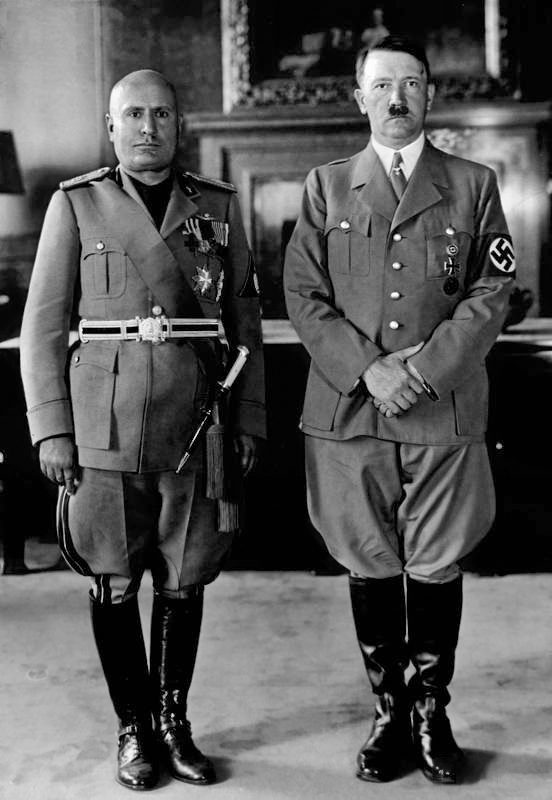
In the real world, the archetype of the hostile brothers manifests in the fascist person and the decadent person, who both oppose the the hero in different ways.
The fascist opposes the exploratory creativite spirit of the hero by demanding absolute conformity, both of himself and others. He finds protection against the threatening unknown in the strict enforcement of what is already familiar. He build ever taller walls to keep out novelty, which the fascist cannot distinguish from chaos that would lead to social instability.
In the end the fascist’s strategy is futile, because if society becomes too rigid then it collapses when the outer environment changes too greatly. For this reason, a surviving society must accept gradual evolution. And of course lets not forget that many of the greatest evils of recent history were perpetrated not by the chaotic antisocial fringe of society, but by the well-socialized, obedient and disciplined like the German Nazis.

Now the decadent person is characterized by a lack of discipline. Rejecting the behaviors that would make them useful to other members of society, the decadent person prefers to blame society itself for their worthlessness and lack of social position. This person sees all human evil as caused by too much social regulation which makes them blind to the protective and benevolent side of the Great Father. While the hero seeks to renew the positive elements of society, the decadent person seeks to label themselves as an admirable rebel in the midst of tyranny, and desires to burn it all down in a chaotic revolution.
Obviously if I am determined to overlook my own part in the failure to resolve my own frustrations, if I am determined to find a scapegoat for my problems, then I am just a stone’s throw away from the mentality that was responsible for Hitler’s final solution, or for the Spanish inquisition, or for Lenin’s cultural cleansing.
Acceptance of the Uncomfortable Fact
The core difference between the hero and evil is that the hero accepts the uncomfortable fact when it presents itself. Inevitably life will present us with uncomfortable facts in the form of errors and unexpected problems, because reality is always more complex than our current understanding of it. The hero accepts the uncomfortable fact even when it means their current personality must painfully die and they must be “born again.”
On the other hand, evil is repression of personal experience. Evil is refusal to recognize the uncomfortable fact, the unexpected anomaly. For example, let’s say someone drinks alcohol and then drives, unexpectedly waking up in their car stuck in a ditch. Heroic behavior would mean recognizing error and adjusting future behavior, perhaps facing one’s alcohol addiction or making sure never to take one’s own car to a party again. Evil behavior would mean refusing to see the error, not adjusting behavior, and of course this approach will eventually lead to catastrophe.
Each time someone rejects anomaly, they become more dead, more withered, more incapable of facing the flow of life itself. Trying to wish some part of experience out of existence or mentally run away from it, means we can no longer use the information contained within the anomaly to adapt in the future. We can only increase our competence when we face our errors honestly and directly. This grows our ability to respond to life, our responsibility. Even more importantly, when we face errors and adapt, we can then communicate our newfound competence to others, which is ultimately how society progresses in a positive way.
Evil is the arrogant rejection of heroic exploration and creative social regeneration, and it is found in both the forms of the fascist and the decadent person.
Conclusion
Let’s finish with the same quote that the Maps of Meaning book end with. This is a quote from the Gospel of Thomas, a gospel of Jesus’s sayings that is not part of the Bible but was only recently rediscovered in Egypt in 1945:
Jesus said, ‘The man old in days will not hesitate to ask a small child seven days old about the place of life, and he will live. For many who are first will become last, and they will become one and the same.’
Jesus said, ‘Recognize what is in your sight, and that which is hidden from you will become plain to you. For there is nothing hidden which will not become manifest.’
His disciples questioned him and said to him, ‘Do you want us to fast? How shall we pray? Shall we give alms? What diet shall we observe?’
Jesus said, ‘Do not tell lies, and do not do what you hate, for all things are plain in the sight of heaven. For nothing hidden will not become manifest, and nothing covered will remain without being uncovered.’”

